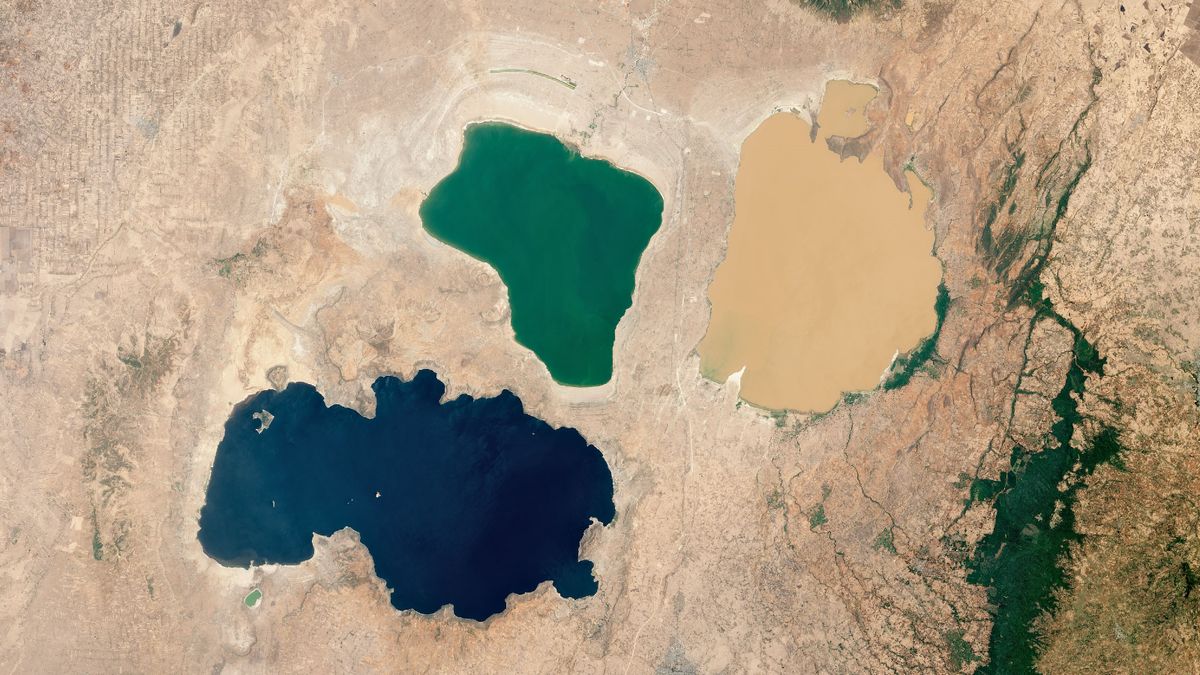Science
Related: About this forumTrio of yellow, blue and green lakes in Ethiopia stuns in striking satellite image
Last edited Sun Oct 16, 2022, 01:00 AM - Edit history (1)
By Harry Baker published 3 days ago
All three lakes used to be part of the same ancient body of water.

A satellite image of Lake Shala (blue), Lake Abijatta (green) and Lake Langano (yellow) in Ethiopia. The striking image was captured by the Landsat 8 satellite on March 29. (Image credit: Joshua Stevens/Landsat 8/NASA Earth Observatory)
A trio of technicolor lakes in Ethiopia, each one a different color from the others, is visible in stunning detail in a satellite image recently released by NASA. The unusual colors are the result of numerous factors, including water chemistry, depth and inhabiting wildlife.
The three lakes are Lake Shala, which has a deep blue hue; Lake Abijatta, which is green in color; and Lake Langano, which has a sandy-yellow hue similar to the surrounding land. The lakes are located in Ethiopia's Great Rift Valley, around 124 miles (200 kilometers) south of the capital, Addis Ababa.
The Landsat 8 satellite, which is co-owned by NASA and the U.S. Geological Survey, snapped the striking real-color image months ago using the onboard Operational Land Imager. The image was released online Oct. 7 by NASA's Earth Observatory(opens in new tab).
Lake Shala, which is around 7.5 miles (12 km) long and 17.4 miles (28 km) across at its widest point, is the deepest of the three lakes, with a maximum depth of 873 feet (266 meters), which makes the water appear a deep blue color from above. The lake has numerous vents on its bottom that pump sulfur into the water. As a result, the lake is highly alkaline, meaning it has a very high pH. Despite the extreme conditions, the lake contains a large number of small crustaceans and microorganisms that support large flocks of visiting flamingos and pelicans, according to Earth Observatory.
More:
https://www.livescience.com/trio-of-multicolored-lakes-ethiopia
Ferrets are Cool
(21,917 posts)Igel
(36,018 posts)Geology there's weird. Heavily volcanic, like Yellowstone, for similar reasons.
Then there are the killer lakes, where carbon dioxide builds up in their depths until the lakes burp out the gas and asphyxiate everything in the surround depressions.